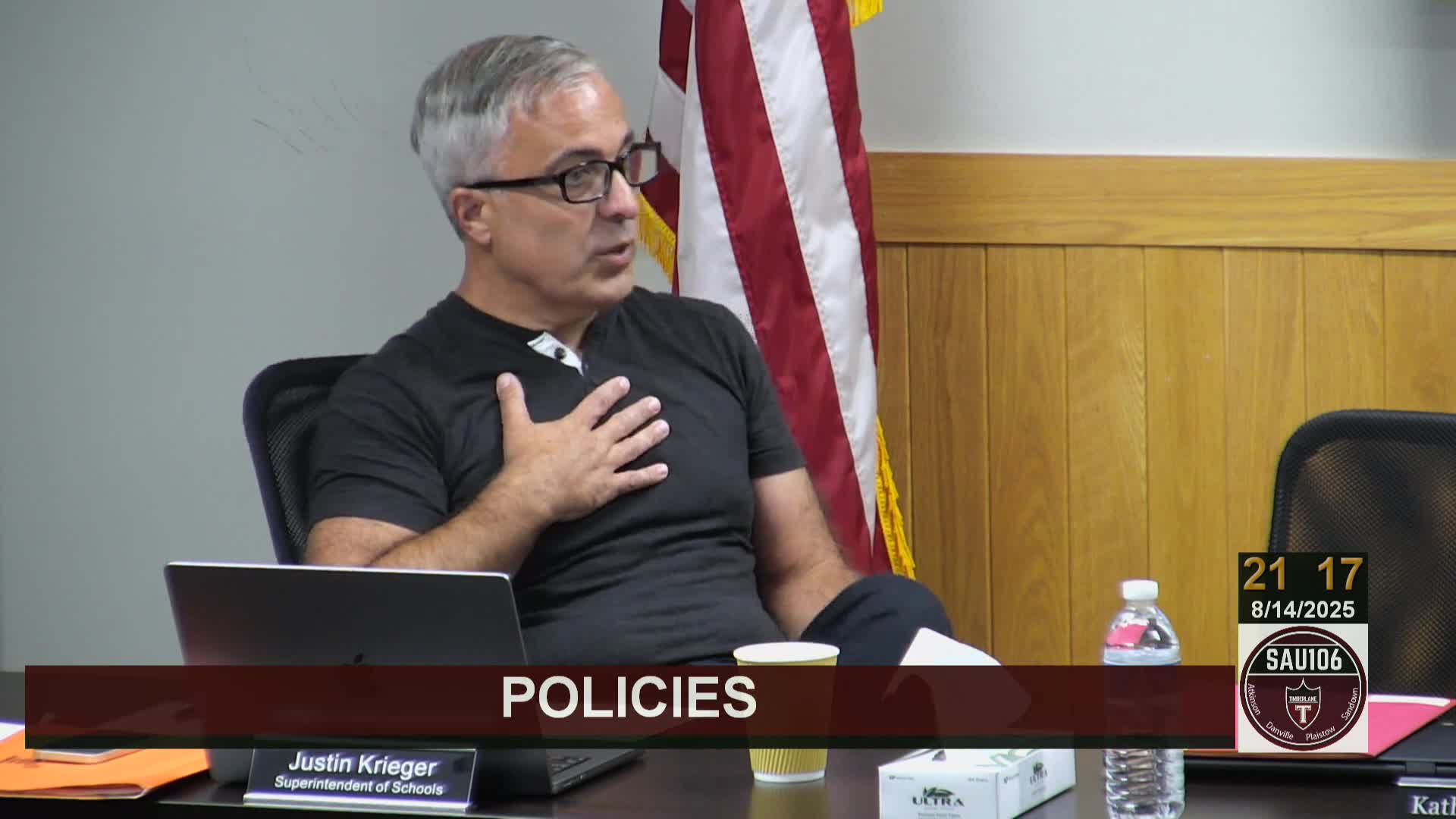School Administrators Implement New Phone Policy to Avoid Conflicts with Students
August 14, 2025 | Timberlane Regional School District, School Districts, New Hampshire
This article was created by AI summarizing key points discussed. AI makes mistakes, so for full details and context, please refer to the video of the full meeting. Please report any errors so we can fix them. Report an error »

In a recent Timberlane Regional School District meeting, school administrators discussed a significant shift in policy regarding student cell phone usage. As the new school year approaches, the district is taking a proactive stance to manage the integration of technology in classrooms while avoiding confrontational measures with students and their families.
The conversation highlighted the district's decision not to confiscate phones from students, a move aimed at fostering a more collaborative and less combative environment. Administrators acknowledged that many families have grown accustomed to immediate access to their children, and they are committed to implementing the new policy without escalating conflicts. “We want teachers focused on teaching, not policing,” one administrator emphasized, underscoring the importance of maintaining a positive educational atmosphere.
To facilitate this transition, each school will designate a universal storage area for students to keep their phones and other communication devices during class. This approach aims to create a straightforward and consistent policy that students can easily understand. Administrators expressed the need for a clear process to address any violations, treating them like other student infractions with a graduated response system.
The meeting also underscored the importance of collaboration among teachers and administrators. There was a consensus that ongoing communication and support would be essential as the district navigates this cultural shift. Teachers are eager for clarity and consistency in how the policy will be enforced, ensuring that all students are held to the same standards.
As the district prepares for the upcoming school year, the emphasis remains on education and understanding rather than punitive measures. Administrators are optimistic that with a clear plan and collaborative effort, they can successfully integrate this new policy while minimizing disruptions to the learning environment. The commitment to a supportive and educational approach reflects a broader understanding of the challenges posed by technology in schools today.
The conversation highlighted the district's decision not to confiscate phones from students, a move aimed at fostering a more collaborative and less combative environment. Administrators acknowledged that many families have grown accustomed to immediate access to their children, and they are committed to implementing the new policy without escalating conflicts. “We want teachers focused on teaching, not policing,” one administrator emphasized, underscoring the importance of maintaining a positive educational atmosphere.
To facilitate this transition, each school will designate a universal storage area for students to keep their phones and other communication devices during class. This approach aims to create a straightforward and consistent policy that students can easily understand. Administrators expressed the need for a clear process to address any violations, treating them like other student infractions with a graduated response system.
The meeting also underscored the importance of collaboration among teachers and administrators. There was a consensus that ongoing communication and support would be essential as the district navigates this cultural shift. Teachers are eager for clarity and consistency in how the policy will be enforced, ensuring that all students are held to the same standards.
As the district prepares for the upcoming school year, the emphasis remains on education and understanding rather than punitive measures. Administrators are optimistic that with a clear plan and collaborative effort, they can successfully integrate this new policy while minimizing disruptions to the learning environment. The commitment to a supportive and educational approach reflects a broader understanding of the challenges posed by technology in schools today.
View full meeting
This article is based on a recent meeting—watch the full video and explore the complete transcript for deeper insights into the discussion.
View full meeting
